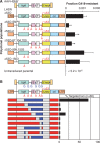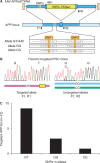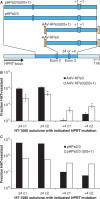The effects of polymorphisms on human gene targeting
- PMID: 24371280
- PMCID: PMC3950700
- DOI: 10.1093/nar/gkt1303
The effects of polymorphisms on human gene targeting
Abstract
DNA mismatches that occur between vector homology arms and chromosomal target sequences reduce gene targeting frequencies in several species; however, this has not been reported in human cells. Here we demonstrate that even a single mismatched base pair can significantly decrease human gene targeting frequencies. In addition, we show that homology arm polymorphisms can be used to direct allele-specific targeting or to improve unfavorable vector designs that introduce deletions.
Figures




References
-
- Sachidanandam R, Weissman D, Schmidt SC, Kakol JM, Stein LD, Marth G, Sherry S, Mullikin JC, Mortimore BJ, Willey DL, et al. A map of human genome sequence variation containing 1.42 million single nucleotide polymorphisms. Nature. 2001;409:928–933. - PubMed
-
- Sedivy JM, Vogelstein B, Liber HL, Hendrickson EA, Rosmarin A. Gene targeting in human cells without isogenic DNA. Science. 1999;283:9a.
Publication types
MeSH terms
Grants and funding
LinkOut - more resources
Full Text Sources
Other Literature Sources
Research Materials

